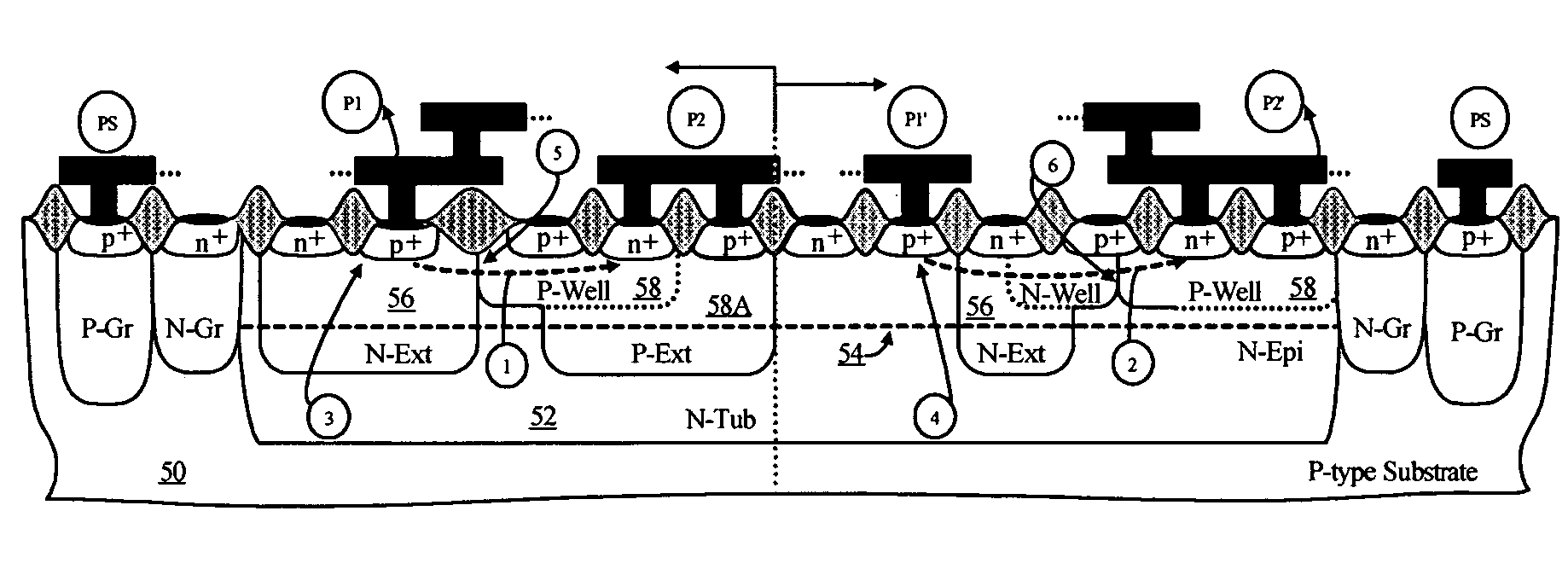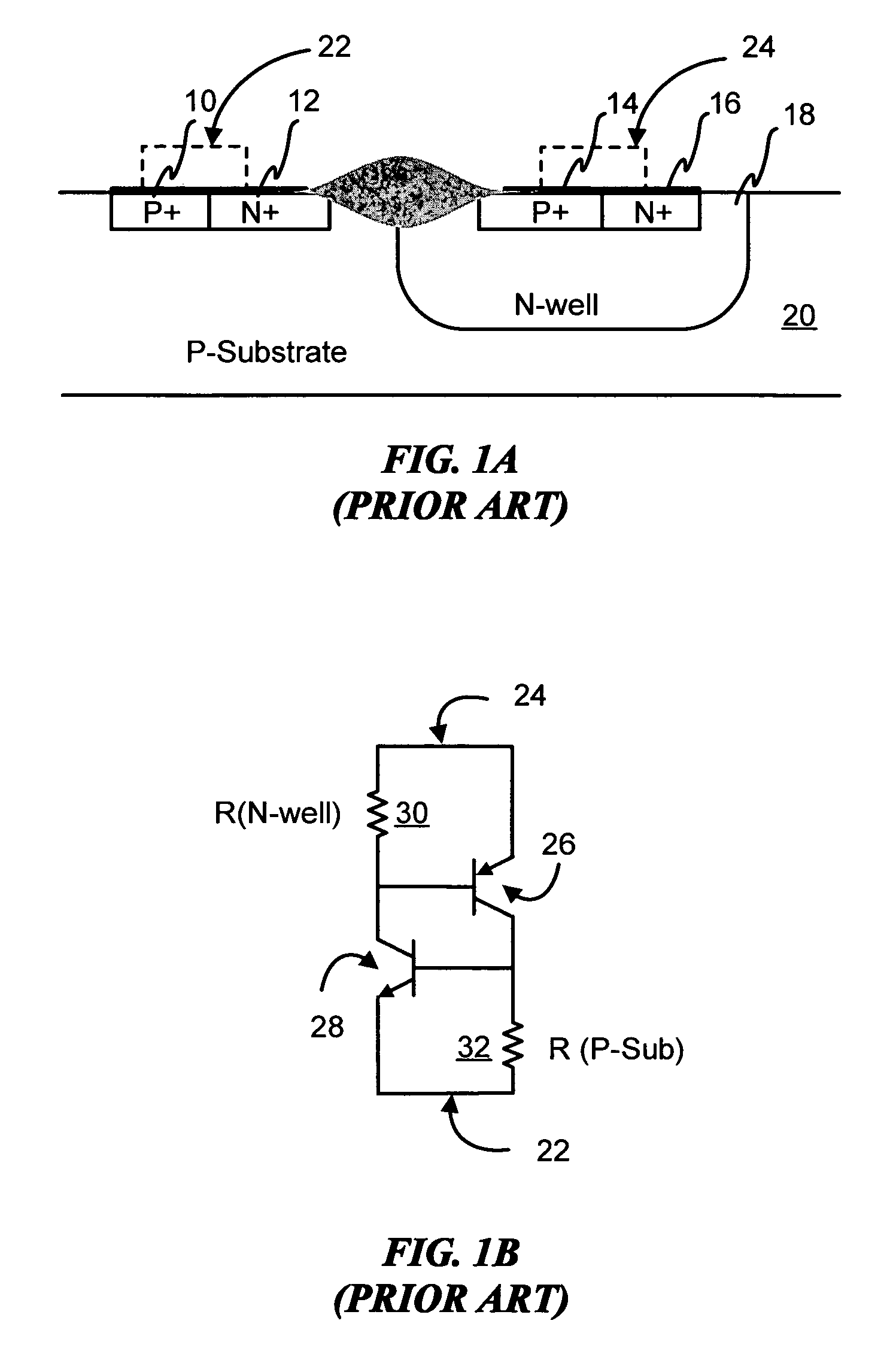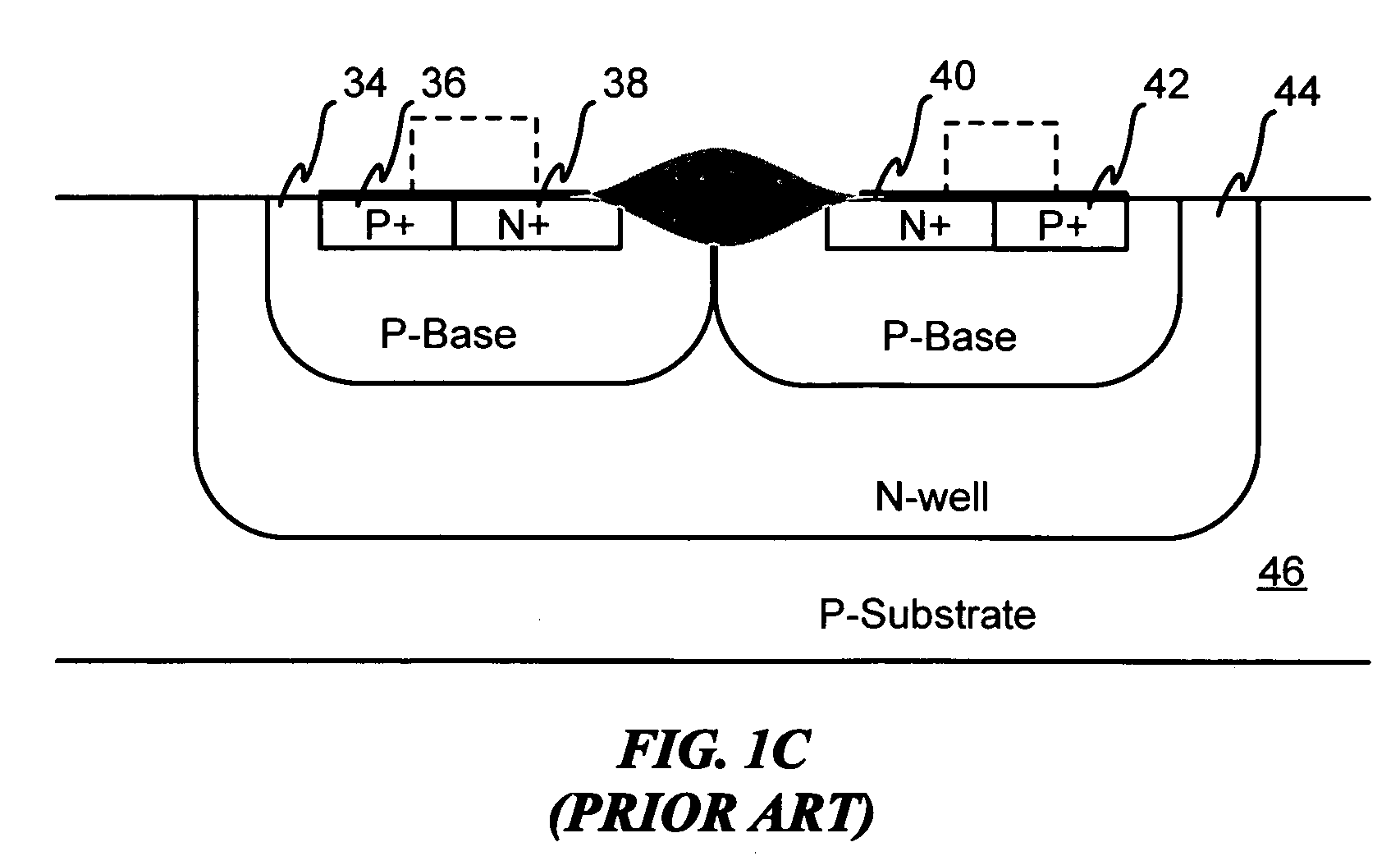Devices with adjustable dual-polarity trigger- and holding-voltage/current for high level of electrostatic discharge protection in sub-micron mixed signal CMOS/BiCMOS integrated circuits
a technology of cmos/bicmos and integrated circuits, which is applied in the direction of semiconductor devices, diodes, transistors, etc., can solve the problems of low level of protection, affecting the reliability and functionality of semiconductor integrated circuits, and the current devices of advanced silicided cmos/bicmos technologies for high level of esd protection are unavailable, so as to achieve high protection
- Summary
- Abstract
- Description
- Claims
- Application Information
AI Technical Summary
Benefits of technology
Problems solved by technology
Method used
Image
Examples
second embodiment
[0100]FIG. 17 shows a second embodiment for a symmetric DP-STT ESD protection device for a circuit operating at a bipolar I / O voltage range of about to ±25 V. Similar to the description provided for FIG. 14, there are symmetric sub-sections (160 and 162), in this case p-type MDSTT-1 (Table 3B), each of them providing ESD protection for current flowing in the opposite directions. The P1 / N2 / P2 / N1 structure defined for each subsection present a combination of forward and reverse blocking junctions, 166 and 164, that give rise to the I-V characteristics shown in FIG. 18. The forward and reverse I-V characteristics 456 and 452, respectively, are obtained for a two-section one-finger 200 μm width device. The symmetric trigger voltage, 454 and 450 in FIG. 18, are measured very close to the established ±25 V, while the device conductivity modulation is ideal for ESD protection without latchup problems.
third embodiment
[0101]FIG. 19 shows a third embodiment for still higher trigger voltages. This cross-sectional view depicts a single finger DP-STT for symmetric trigger voltage over ±30 V. This embodiment maintains the general scheme of the two previous embodiments, but the sub-section blocking junctions are defined differently, see sub-sections 170 and 172, corresponding to an embodiment of the p-type MDSTT (P-MDSTT-2 in Table 3B). The forward blocking junction 176 is graded by the low doping concentration of the N−Epi 54. The reverse blocking junction 174 allows for conduction of the device without interaction between the parasitics formed with the p-side of the guard ring 168 and the device's electrodes, 180 and 182. FIG. 20 shows the resulting symmetric TLP I-V characteristics, 462 and 468, for a five finger device using the inter-finger guard ring isolation. The forward and reverse trigger voltages, 464 and 458, are close to ±36 V and the currents at the holding voltages, 460 and 466, are over...
PUM
 Login to View More
Login to View More Abstract
Description
Claims
Application Information
 Login to View More
Login to View More - R&D
- Intellectual Property
- Life Sciences
- Materials
- Tech Scout
- Unparalleled Data Quality
- Higher Quality Content
- 60% Fewer Hallucinations
Browse by: Latest US Patents, China's latest patents, Technical Efficacy Thesaurus, Application Domain, Technology Topic, Popular Technical Reports.
© 2025 PatSnap. All rights reserved.Legal|Privacy policy|Modern Slavery Act Transparency Statement|Sitemap|About US| Contact US: help@patsnap.com



